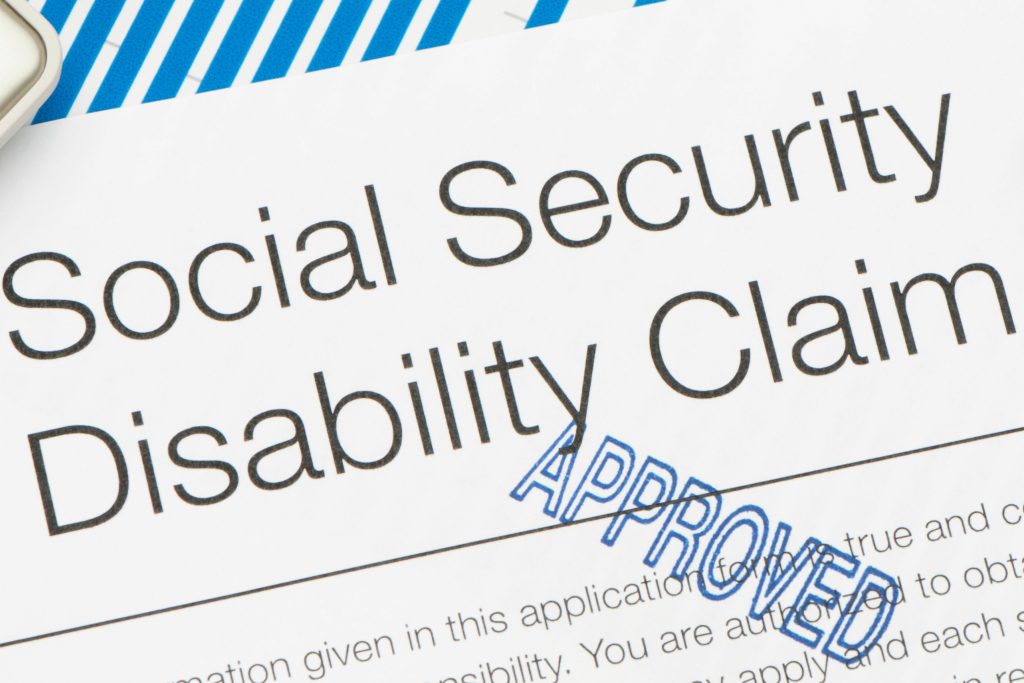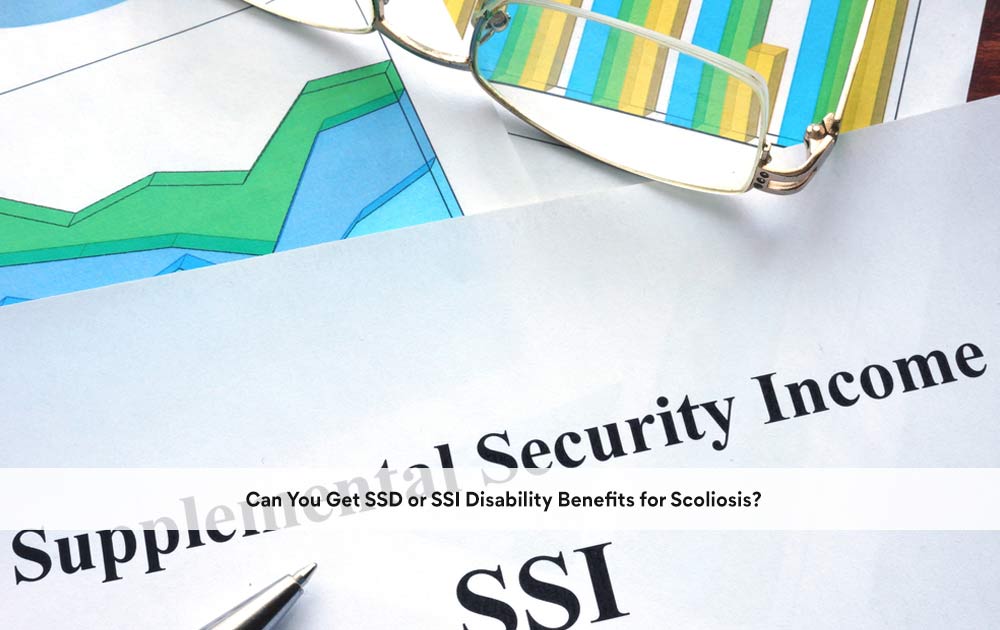Scoliosis is a medical condition characterized by an abnormal curvature of the spine. While severe cases of scoliosis can cause significant physical limitations and pain, individuals with mild scoliosis may wonder if they are eligible for disability benefits. This article explores the criteria and process for receiving disability benefits for mild cases of scoliosis, focusing on both Social Security Disability Insurance (SSDI) and Supplemental Security Income (SSI) programs.
Comprendre la scoliose
Scoliosis affects the spine, causing it to curve sideways. It can occur at any age but is most commonly diagnosed during adolescence. The exact cause of scoliosis is often unknown but may be influenced by factors such as genetics, muscle imbalances, and certain medical conditions.

Defining Mild Scoliosis
Mild scoliosis is typically defined as a curvature of the spine measuring between 10 and 25 degrees. While this degree of curvature may not cause severe physical limitations, it can still lead to discomfort, pain, and potential complications if left untreated. The severity of scoliosis is determined by a medical professional through X-rays and other diagnostic tests [1][2].
Social Security Disability Insurance (SSDI) and Scoliosis
SSDI is a federal program providing financial assistance to individuals with disabilities who have paid into the Social Security system through their work history. To qualify for SSDI benefits, an individual must have a severe disability that prevents them from engaging in substantial gainful activity (SGA) and is expected to last at least one year or result in death [3].
For individuals with mild scoliosis, meeting the criteria for SSDI benefits may be challenging. The Social Security Administration (SSA) evaluates disability claims based on the severity of the impairment and its impact on an individual’s ability to work. Mild scoliosis alone may not meet the criteria for a severe impairment that prevents substantial gainful activity [4][5].

Supplemental Security Income (SSI) and Scoliosis
SSI is a needs-based program providing financial assistance to individuals with disabilities who have limited income and resources. Unlike SSDI, SSI does not require individuals to have a work history or pay into the Social Security system. Eligibility is based on financial need and disability [6].
Individuals with mild scoliosis may have a better chance of qualifying for SSI benefits if they meet the income and resource requirements. However, the severity of the impairment and its impact on an individual’s ability to work will still be evaluated [7][8].

Evaluating Disability Criteria for Mild Scoliosis
To determine if an individual with mild scoliosis is eligible for disability benefits, the SSA considers various factors, including medical evidence, functional limitations, and daily activities [9].
Medical Evidence and Documentation
Providing comprehensive medical evidence and documentation of the scoliosis diagnosis and its impact on daily life is crucial when applying for disability benefits. This may include X-rays, medical reports, treatment records, and other relevant documentation from healthcare professionals [10][11].
Functional Limitations and Daily Activities
The SSA evaluates an individual’s functional limitations to determine their ability to perform work-related activities. For individuals with mild scoliosis, the evaluation may focus on the impact of the condition on mobility, pain levels, and limitations in physical activities. Detailed information about any difficulties experienced in standing, walking, lifting, or performing other tasks related to employment is essential [12][13].
The Role of Medical Professionals
Medical professionals play a crucial role in the disability evaluation process. Their expertise and documentation are vital in establishing the severity of scoliosis and its impact on an individual’s ability to work. The SSA may consider medical opinions from treating physicians, specialists, and other healthcare providers when evaluating a disability claim [14][15].
The Disability Application Process
Individuals with mild scoliosis can complete the disability benefits application online, by phone, or in person at their local Social Security office. The application requires detailed information about the individual’s medical condition, work history, and daily activities. Providing accurate and thorough information is essential to support the claim [16][17].
Appealing a Denied Claim
If a disability claim for mild scoliosis is initially denied, individuals have the right to appeal the decision. The appeals process involves several stages, including reconsideration, a hearing before an administrative law judge, and further appeals to the Appeals Council and federal court if necessary. Gathering additional medical evidence and seeking legal representation can strengthen the appeal [18][19].
Conclusion
While it may be challenging to receive disability benefits for mild cases of scoliosis, it is not impossible. The evaluation process considers various factors, including medical evidence, functional limitations, and daily activities. Providing comprehensive documentation and seeking the support of medical professionals can increase the chances of a successful disability claim. It is important for individuals with mild scoliosis to understand the criteria and process for receiving disability benefits and to explore all available options for financial assistance [20][21][22].
Références
- Nolo. “Legal Assistance for Disability Appeals.” https://www.nolo.com/legal-encyclopedia/social-security-disability-appeals.html.
- American Association of Neurological Surgeons. “Scoliosis.” https://www.aans.org/Patients/Neurosurgical-Conditions-and-Treatments/Scoliosis.
- Scoliosis Research Society. “Scoliosis.” https://www.srs.org/professionals/professional-resources/scoliosis.
- Administration de la sécurité sociale. "Prestations d'invalidité". https://www.ssa.gov/benefits/disability/.
- Social Security Administration. “Listing 1.04 – Disorders of the Spine.” https://www.ssa.gov/disability/professionals/bluebook/musculoskeletal-disorders.htm.
- National Center for Biotechnology Information. “Scoliosis: A Review.” https://www.ncbi.nlm.nih.gov/pmc/articles/PMC2709697/.
- Social Security Administration. “Supplemental Security Income (SSI).” https://www.ssa.gov/ssi/.
- National Center for Biotechnology Information. “Functional Limitations of Scoliosis.” https://www.ncbi.nlm.nih.gov/pmc/articles/PMC2709697/.
- Social Security Administration. “SSI Eligibility Requirements.” https://www.ssa.gov/ssi/.
- Social Security Administration. “SSA Listing for Scoliosis.” https://www.ssa.gov/disability/professionals/bluebook/adultlist.htm.
- National Center for Biotechnology Information. “Submitting Medical Records for Disability Claims.” https://www.ncbi.nlm.nih.gov/pmc/articles/PMC2709697/.
- Social Security Administration. “Disability Application Process.” https://www.ssa.gov/benefits/disability/apply.html.
- National Center for Biotechnology Information. “Evaluating Scoliosis for Disability.” https://www.ncbi.nlm.nih.gov/pmc/articles/PMC2709697/.
- Social Security Administration. “Functional Limitations and Work Ability.” https://www.ssa.gov/benefits/disability/apply.html.
- Scoliosis Research Society. “Medical Documentation for Scoliosis.” https://www.srs.org/professionals/professional-resources/scoliosis.
- Social Security Administration. “Role of Medical Professionals in Disability Claims.” https://www.ssa.gov/benefits/disability/apply.html.
- Social Security Administration. “Applying for Disability Benefits.” https://www.ssa.gov/benefits/disability/apply.html.
- National Center for Biotechnology Information. “Disability Benefits Application Process.” https://www.ncbi.nlm.nih.gov/pmc/articles/PMC2709697/.
- Social Security Administration. “Appealing a Denied Disability Claim.” https://www.ssa.gov/benefits/disability/appeal.html.
- Nolo. “Social Security Disability Appeals.” https://www.nolo.com/legal-encyclopedia/social-security-disability-appeals.html.
- Social Security Administration. “Understanding the Disability Evaluation Process.” https://www.ssa.gov/benefits/disability/continue.html.
- Social Security Administration. “Disability Benefits Appeals Process.” https://www.ssa.gov/benefits/disability/appeal.html.

